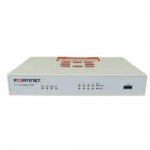hikvisioncamera
New member
1. Introduction
Creating a firewall with a Raspberry Pi is an affordable and educational project that enhances your network security. This guide will walk you through the steps of building your own Raspberry Pi firewall while highlighting some features of commercial solutions like the Fortinet Firewall and FortiGate Firewall.
2. Understanding the Basics of Firewalls
A firewall acts as a barrier between your trusted internal network and untrusted external networks. It monitors and controls incoming and outgoing traffic based on predetermined security rules, protecting your devices from unauthorized access and cyber threats.
3. Why Choose Raspberry Pi?
The Raspberry Pi is a compact, cost-effective, and versatile single-board computer that can be used for various projects, including building a firewall. Its low power consumption and flexibility make it an excellent choice for a DIY firewall solution.
4. Required Hardware and Software
To set up your Raspberry Pi firewall, you will need:
Start by downloading the Firewall security OS or your chosen Linux distribution and flash it onto the microSD card using a tool like Balena Etcher. Insert the card into your Raspberry Pi, connect it to your network via Ethernet, and power it on. Follow the on-screen instructions to complete the OS setup.
6. Setting Up Firewall Software
Once the operating system is installed, download and install your chosen firewall software. For example, IPFire provides a user-friendly web interface that makes configuring your firewall simple. Follow the installation instructions provided by the software’s documentation.
7. Configuring Firewall Rules
After installation, configure the firewall rules according to your security needs. You can set rules for blocking specific IP addresses, allowing traffic on certain ports, and enabling or disabling services. Ensure you apply best practices in firewall configurations to protect your network effectively.
8. Monitoring Network Traffic
Monitoring your network traffic is crucial for identifying potential threats. Tools integrated into firewall software like IPFire offer real-time insights into your network activity, helping you respond promptly to suspicious behavior.
9. Comparing with Fortinet Solutions
While a Raspberry Pi firewall is a great DIY project, organizations often prefer robust solutions like the Fortinet Firewall and FortiGate Firewall for enterprise-grade security. These systems offer advanced features such as machine learning-driven threat detection, comprehensive logging, and user-friendly management interfaces.
10. Conclusion
Building a Raspberry Pi firewall is an excellent way for beginners to learn about network security while providing an added layer of protection for their home networks. Although it may not match the capabilities of commercial firewalls like Fortinet, it serves as a practical introduction to cybersecurity concepts.
Creating a firewall with a Raspberry Pi is an affordable and educational project that enhances your network security. This guide will walk you through the steps of building your own Raspberry Pi firewall while highlighting some features of commercial solutions like the Fortinet Firewall and FortiGate Firewall.
2. Understanding the Basics of Firewalls
A firewall acts as a barrier between your trusted internal network and untrusted external networks. It monitors and controls incoming and outgoing traffic based on predetermined security rules, protecting your devices from unauthorized access and cyber threats.
3. Why Choose Raspberry Pi?
The Raspberry Pi is a compact, cost-effective, and versatile single-board computer that can be used for various projects, including building a firewall. Its low power consumption and flexibility make it an excellent choice for a DIY firewall solution.
4. Required Hardware and Software
To set up your Raspberry Pi firewall, you will need:
- A Raspberry Pi (any model, but Raspberry Pi 3 or later is recommended)
- A microSD card (at least 8GB)
- A USB power supply
- Ethernet cables
- Raspbian OS or any preferred Linux distribution
- Firewall software like IPFire or OpenWrt
Start by downloading the Firewall security OS or your chosen Linux distribution and flash it onto the microSD card using a tool like Balena Etcher. Insert the card into your Raspberry Pi, connect it to your network via Ethernet, and power it on. Follow the on-screen instructions to complete the OS setup.
6. Setting Up Firewall Software
Once the operating system is installed, download and install your chosen firewall software. For example, IPFire provides a user-friendly web interface that makes configuring your firewall simple. Follow the installation instructions provided by the software’s documentation.
7. Configuring Firewall Rules
After installation, configure the firewall rules according to your security needs. You can set rules for blocking specific IP addresses, allowing traffic on certain ports, and enabling or disabling services. Ensure you apply best practices in firewall configurations to protect your network effectively.
8. Monitoring Network Traffic
Monitoring your network traffic is crucial for identifying potential threats. Tools integrated into firewall software like IPFire offer real-time insights into your network activity, helping you respond promptly to suspicious behavior.
9. Comparing with Fortinet Solutions
While a Raspberry Pi firewall is a great DIY project, organizations often prefer robust solutions like the Fortinet Firewall and FortiGate Firewall for enterprise-grade security. These systems offer advanced features such as machine learning-driven threat detection, comprehensive logging, and user-friendly management interfaces.
10. Conclusion
Building a Raspberry Pi firewall is an excellent way for beginners to learn about network security while providing an added layer of protection for their home networks. Although it may not match the capabilities of commercial firewalls like Fortinet, it serves as a practical introduction to cybersecurity concepts.
Attachments
-
8.1 KB Views: 0

